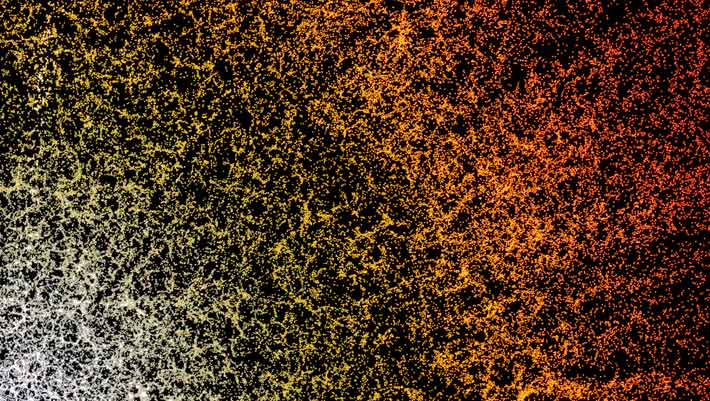
DESI Creates Largest and Most Detailed Map of Universe Ever
The Dark Energy Spectroscopic Instrument (DESI), a multi-object survey spectrograph installed on the Nicholas U. Mayall 4-m Telescope at Kitt Peak National Observatory, has cataloged more galaxies than all other previous 3D redshift surveys combined, measuring 7.5 million galaxies in only seven months since beginning science operations. Yet its only about 10% of the way through its five-year mission. Once completed, that phenomenally detailed 3D map will yield a better understanding of dark energy, and thereby give physicists and astronomers a better understanding of the past — and future — of the Universe. Meanwhile, the impressive technical performance and literally cosmic achievements of the survey thus far are helping scientists reveal the secrets of the most powerful sources of light in the Universe.A slice through the 3D map of galaxies from the first few months of the DESI survey. The Earth is at the center, with the furthest galaxies plotted at distances of 10 billion light-years. Each point represents one galaxy. This version of the DESI map shows a subset of 400,000 of the 35 million galaxies that will be in the final map. Image credit: D. Schlegel / DESI / Lawrence Berkeley National Laboratory / M. Zamani, NSFs NOIRLab.The primary task of the DESI survey is to collect spectra of millions of galaxies across more than a third of the entire sky.By breaking down the light from each galaxy into its spectrum of colors, DESI can determine how much the light has been redshifted — stretched out toward the red end of the spectrum by the expansion of the Universe during the billions of years it traveled before reaching Earth.It is those redshifts that let DESI see the depth of the sky. The more redshifted a galaxys spectrum is, in general, the farther away it is.With a 3D map of the cosmos in hand, astrophysicists can chart clusters and superclusters of galaxies.Those structures carry echoes of their initial formation, when they were just ripples in the infant cosmos.There is a lot of beauty to it, said Dr. Julien Guy, a researcher with the Lawrence Berkeley National Laboratory.In the distribution of the galaxies in the 3D map, there are huge clusters, filaments, and voids.Theyre the biggest structures in the Universe. But within them, you find an imprint of the very early Universe, and the history of its expansion since then.Our science goal is to measure the imprint of waves in the primordial plasma, he added.Its astounding that we can actually detect the effect of these waves billions of years later, and so soon in our survey.Understanding the expansion history is crucial, with nothing less than the fate of the entire Universe at stake.Today, about 70% of the content of the Universe is dark energy, a mysterious form of energy driving the expansion of the Universe ever faster.As the Universe expands, more dark energy pops into existence, which speeds up the expansion more, in a cycle that is driving the fraction of dark energy in the Universe ever upwards.Dark energy will ultimately determine the destiny of the Universe: will it expand forever? Will it collapse onto itself again, in a Big Bang in reverse? Or will it rip itself apart?Answering these questions means learning more about how dark energy has behaved in the past — and thats exactly what DESI is designed to do.And by comparing the expansion history with the growth history, cosmologists can check whether Einsteins theory of general relativity holds over these immense spans of space and time.But understanding the fate of the Universe will have to wait until DESI has completed more of its survey.In the meantime, DESI is already driving breakthroughs in our understanding of the distant past, more than 10 billion years ago when galaxies were still young.Its pretty amazing, said DESI project manager Ragadeepika Pucha, a graduate student at the University of Arizona.DESI will tell us more about the physics of galaxy formation and evolution.
……America
Comments
Leave a comment in Nestia App